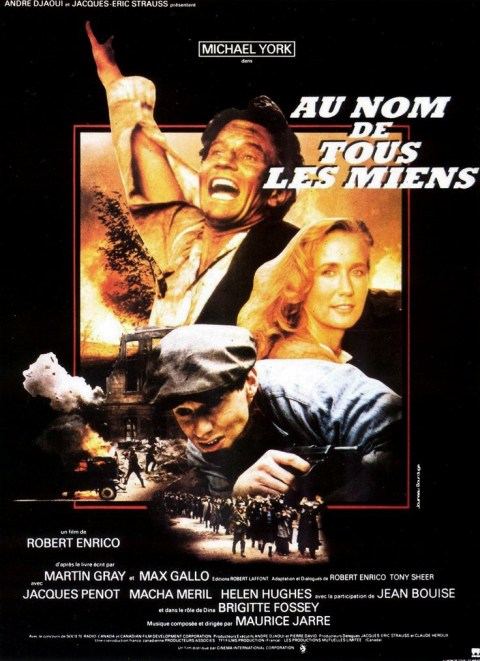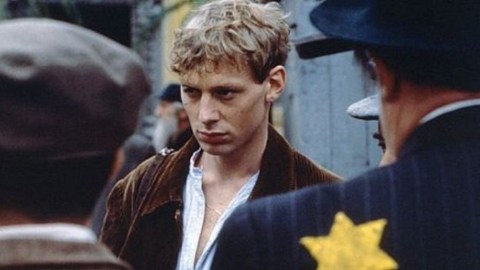17. 4. – 19. 4. 2026
For Those I Loved

 Original title: Au nom de tous les miens
Original title: Au nom de tous les miensDirector: Robert Enrico
Production: 1983, France / Canada / Hungary
Length: 145 min.
Screened:
KRRR! 2018: 70mm 2.2:1, Colours intact, MG, Spoken language: French, Subtitles: Czech, EnglishAnnotation for KRRR! 2018
The French-Canadian-Hungarian co-production In the name of my loved ones from 1983, directed by the French-Italian director Roberto Enrico, is a relatively faithful adaptation of the successful autobiography of Martin Gray and Max Gallo of the same name. The relationship between reality and fiction is worth mentioning here, because despite the proclaimed credibility, this publication can be classified more in the category of fictionalized biographies, since several events did not happen to Gray (for example, the deportation to the Treblinka concentration camp) and are the result of the co-author's fabrication.
The film narrative is framed by scenes from the present, in the beginning of which the viewer learns about the death of Gray's wife and children as a result of a fire through a mysterious phone call. Desperate Gray (played by Michael York, who also played the father figure in the scenes from the past) under the influence of remorse for their deaths and his own survival, loads his rifle and begins to record his narration of the past. A voice on the recording, belonging to his wife, urges him to do so in order to leave a memory for their children. The first type of emotion that drives the present-tense scenes is tension, stemming from the question of whether Gray will end up taking his own life after he finishes his reminiscing. Subsequently, this tension is accentuated again at the end of the film, when Gray remembers the immediate events that are the cause of his current situation.
While the scenes in the present are temporally and spatially uniform, those in the past are episodic and unfold chronologically, limited in scope and depth to what the protagonist experiences and knows. Gray, as a modern Odysseus, experiences every vicissitude that the half of the 20th century "prepared" for its participants, finding himself actively involved in wartime and private dramas. It is therefore no wonder that in the end he did not experience many of them himself. As the narrator, Gray obviously focuses on the events of the war, during which he lived through the crucial years of adolescence and which influenced his philosophy of life to survive in all circumstances. He orients himself quickly in any new environment, knows who to bribe and effectively builds a network of information and relationships. Adapting one's identity to changing circumstances is shown, for example, by changing one's name. In the film, his own family addresses him as Martin, Mietek is for the Polish insurgents from the Warsaw ghetto, Míš becomes for the soldiers of the Red Army. The Polish Grajewski changes to Gray upon arrival in the US.
The second type of emotion brought by the scenes from the past is the curiosity of the various ways Gray escapes danger, how his family members will turn out, and what he had to go through to get to the starting situation at the beginning of the film. It is precisely the motive of remembering and realizing what obstacles he has already overcome, which has a fundamental impact on his decision-making in the present time, in a situation between life and death, the day after the mass death of his family.
The style of the film is rather inconspicuous, the color palette dull and greyish, supporting and leaving room for the narrative. On the Krnov canvas, the realistic looking environments that have been thought out in detail stand out in particular.